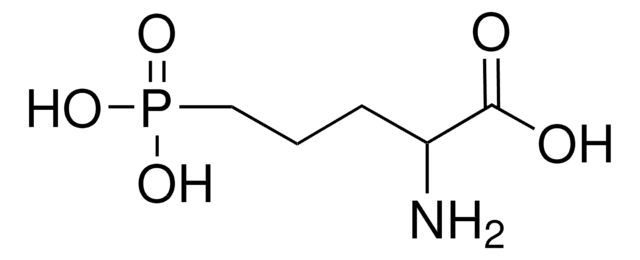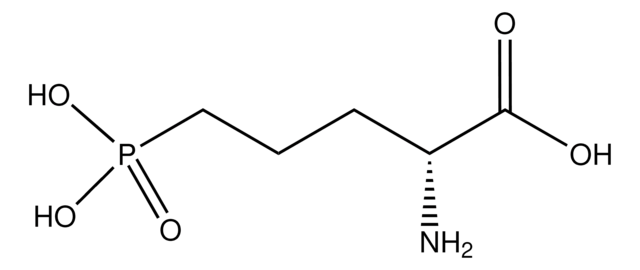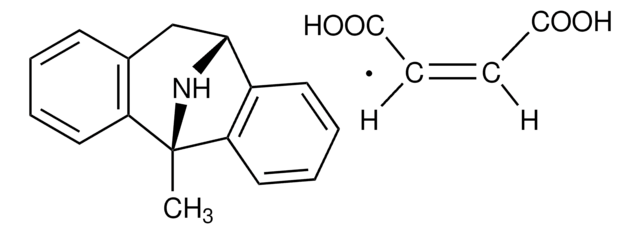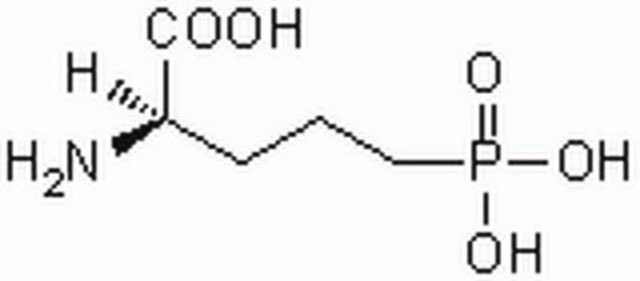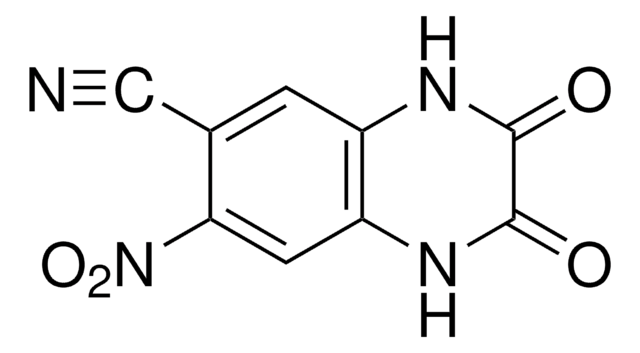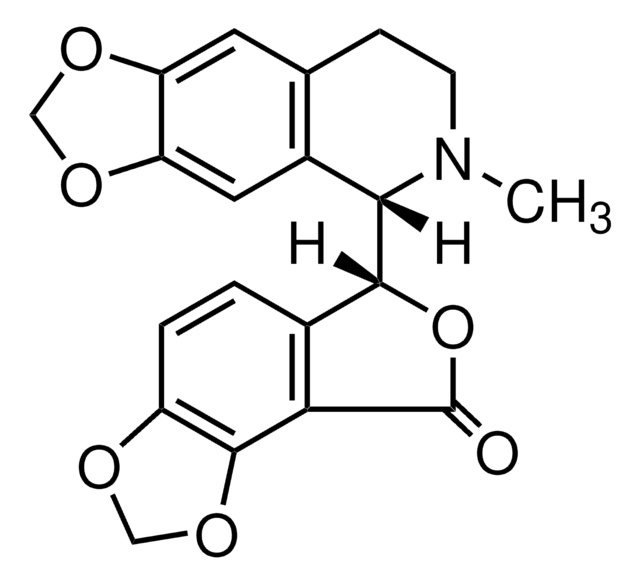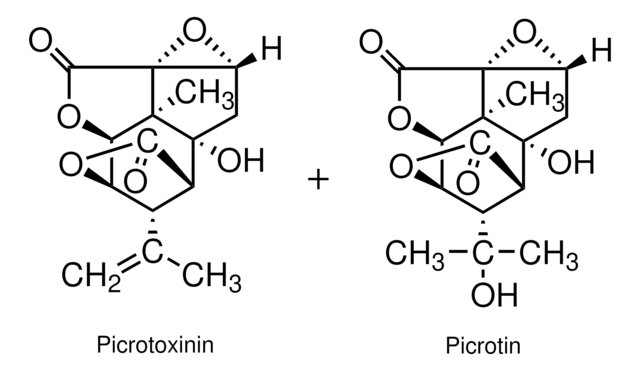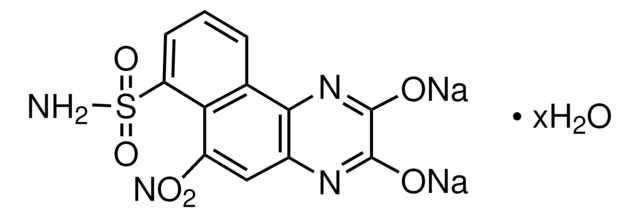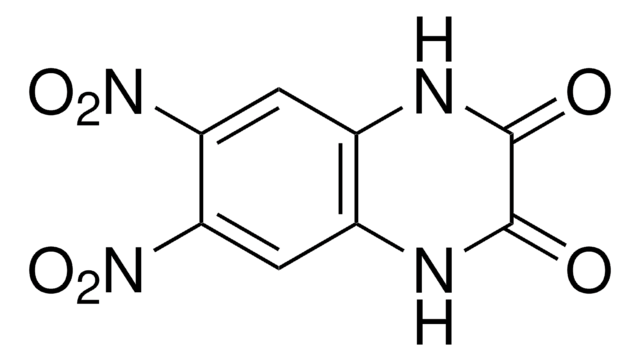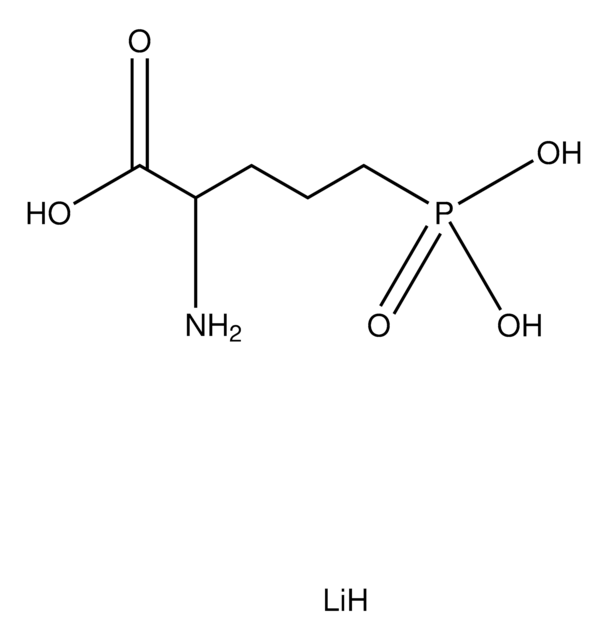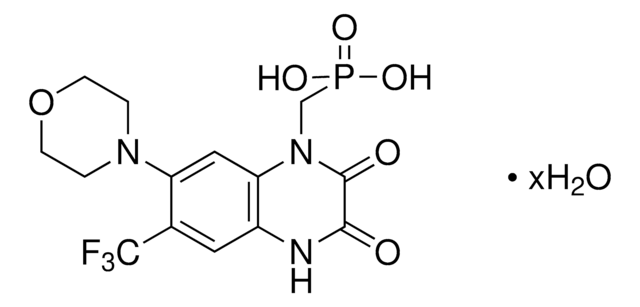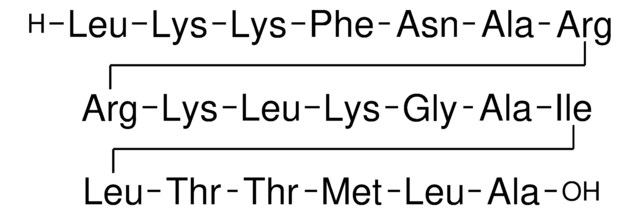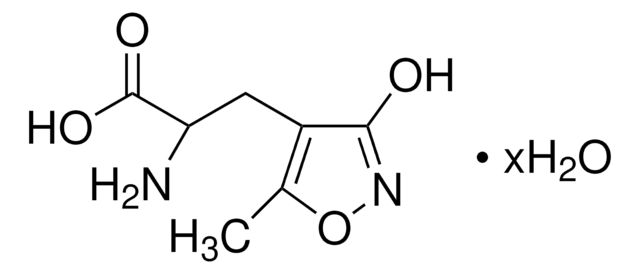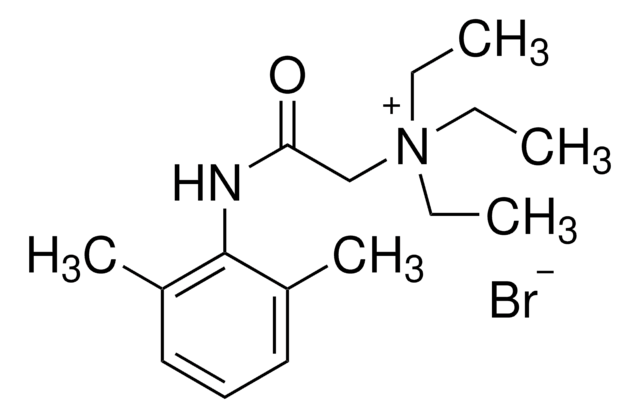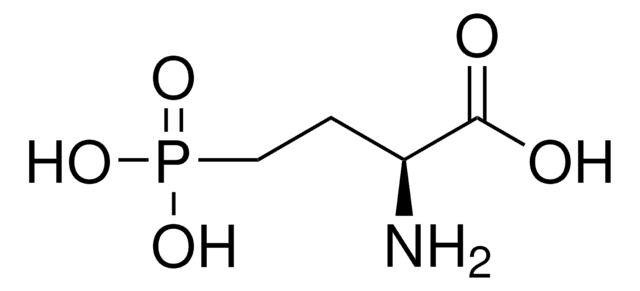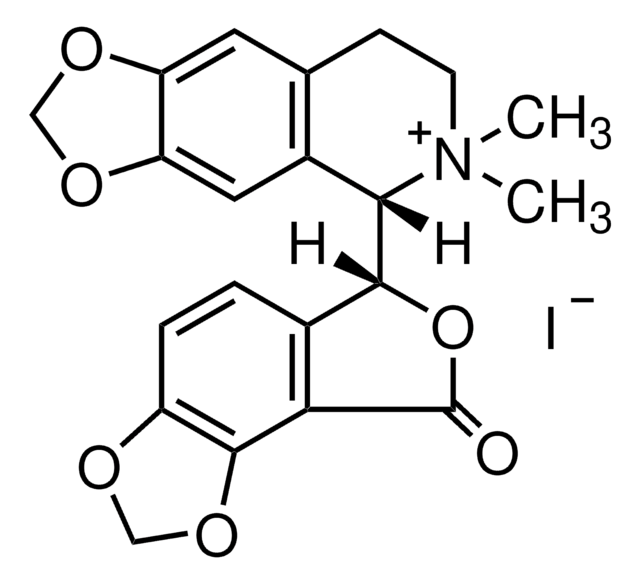C239
CNQX disodium salt hydrate
≥98% (HPLC), solid, AMPA/kainate receptor antagonist.
Sinónimos:
6-Cyano-7-nitroquinoxaline-2,3-dione disodium salt hydrate
About This Item
Productos recomendados
Nombre del producto
CNQX disodium salt hydrate, ≥98% (HPLC), solid
Nivel de calidad
Ensayo
≥98% (HPLC)
Formulario
solid
condiciones de almacenamiento
protect from light
color
orange to red
solubilidad
H2O: >2 mg/mL (warmed)
cadena SMILES
O.[Na+].[Na+].[O-]c1nc2cc(C#N)c(cc2nc1[O-])[N+]([O-])=O
InChI
1S/C9H4N4O4.2Na.H2O/c10-3-4-1-5-6(2-7(4)13(16)17)12-9(15)8(14)11-5;;;/h1-2H,(H,11,14)(H,12,15);;;1H2/q;2*+1;/p-2
Clave InChI
LCDWHGXMFAZHEO-UHFFFAOYSA-L
Información sobre el gen
human ... ADORA1(134) , ADORA2A(135) , ADORA2B(136) , ADORA3(140) , GRIA1(2890) , GRIA2(2891) , GRIA3(2892) , GRIA4(2893)
Aplicación
- as a competitive non-NMDA receptor antagonist and competitive AMPA/kainate receptor antagonist in neuronal cultures(110)
- as a glutamatergic blockers for measuring inhibitory postsynaptic currents in projection neurons(111)
- as a AMPA glutamate receptor antagonist prefrontal cortex neurons(112)
Acciones bioquímicas o fisiológicas
Características y beneficios
Código de clase de almacenamiento
11 - Combustible Solids
Clase de riesgo para el agua (WGK)
WGK 3
Punto de inflamabilidad (°F)
Not applicable
Punto de inflamabilidad (°C)
Not applicable
Equipo de protección personal
Eyeshields, Gloves, type N95 (US)
Elija entre una de las versiones más recientes:
¿Ya tiene este producto?
Encuentre la documentación para los productos que ha comprado recientemente en la Biblioteca de documentos.
Los clientes también vieron
Nuestro equipo de científicos tiene experiencia en todas las áreas de investigación: Ciencias de la vida, Ciencia de los materiales, Síntesis química, Cromatografía, Analítica y muchas otras.
Póngase en contacto con el Servicio técnico